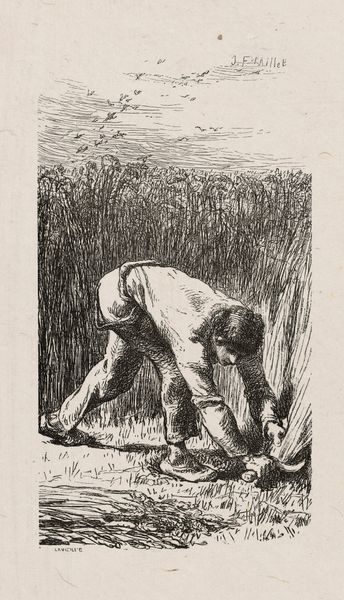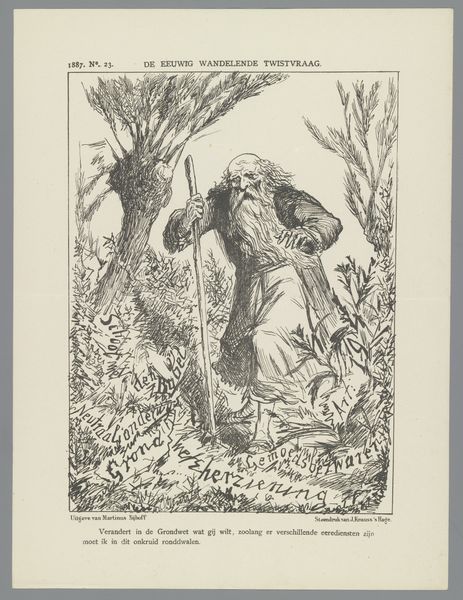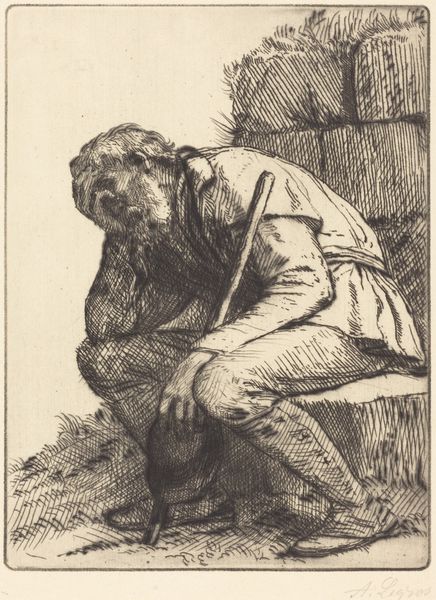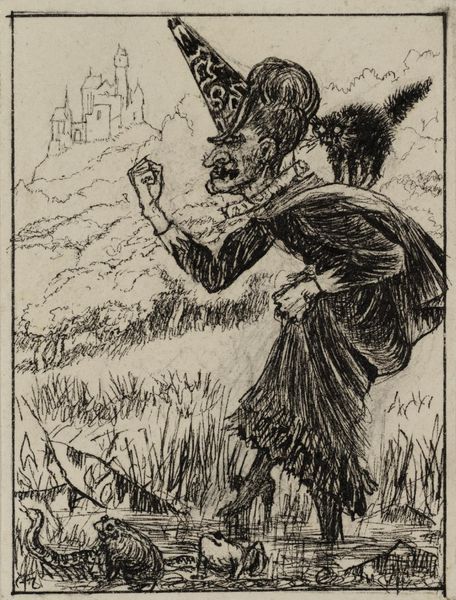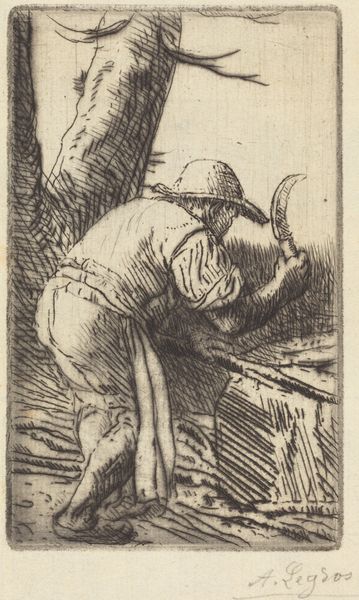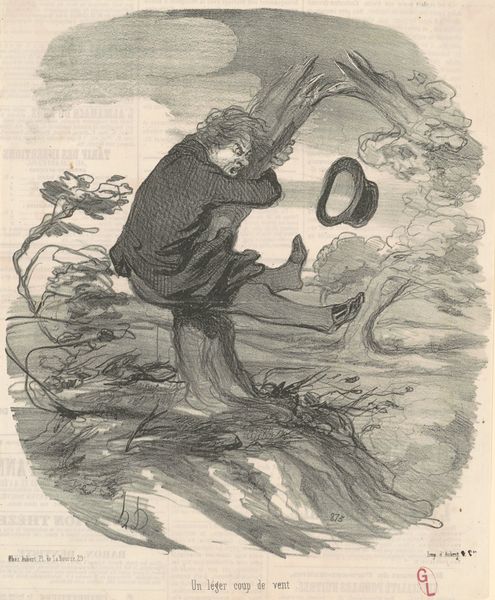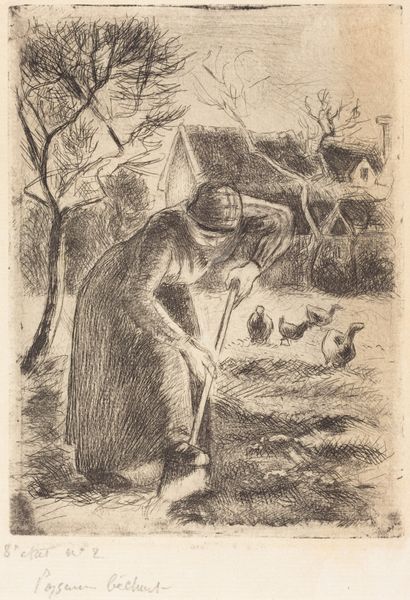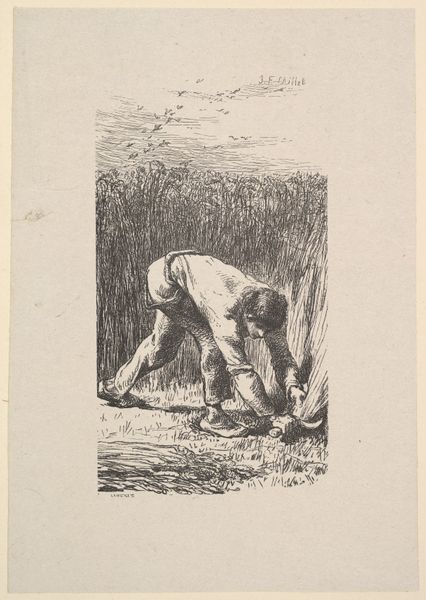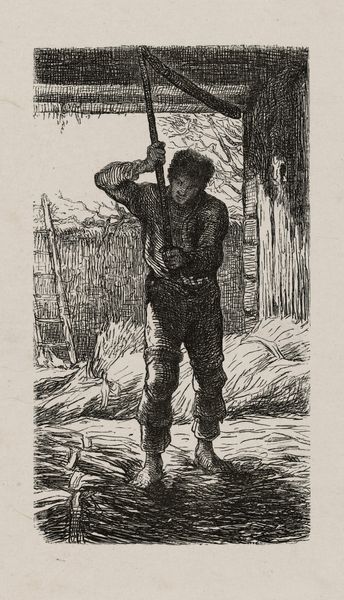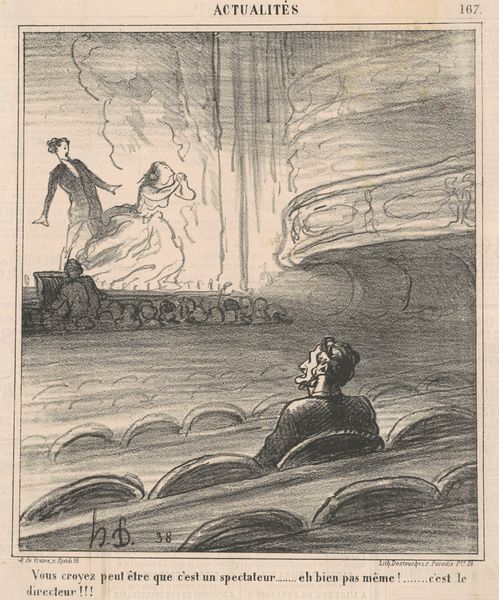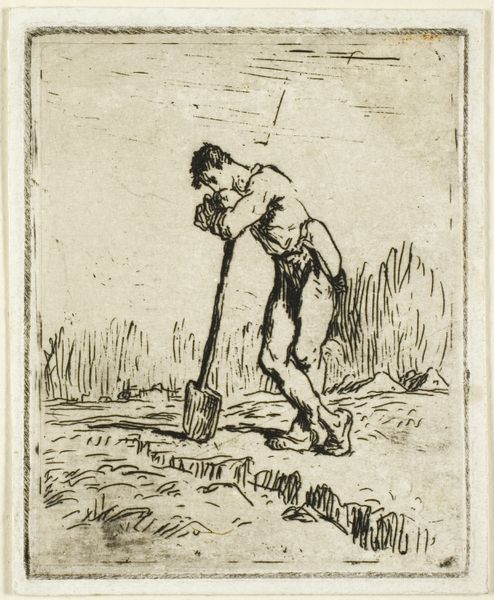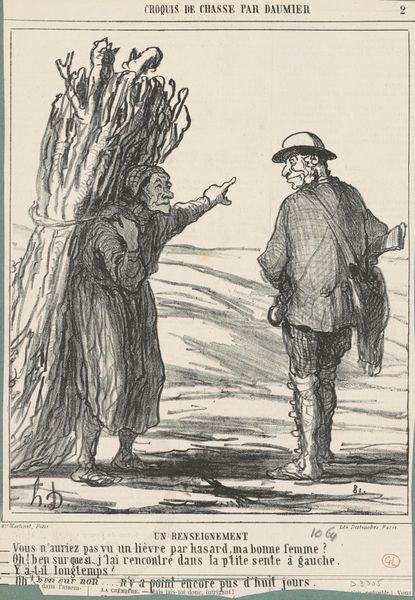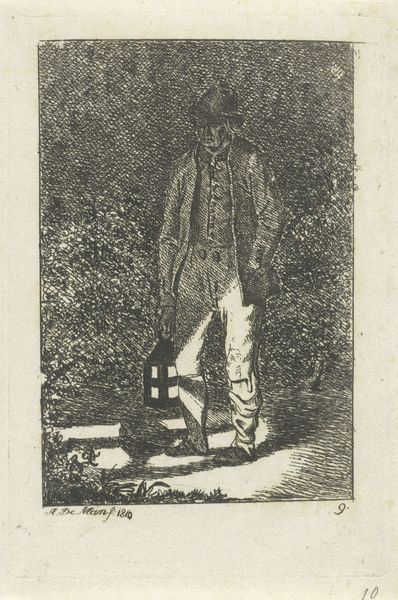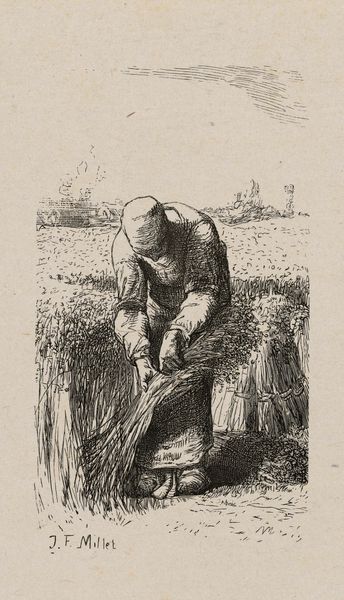
graphic-art, print, engraving
#
portrait
#
graphic-art
#
narrative-art
# print
#
old engraving style
#
symbolism
#
engraving
Dimensions: height 271 mm, width 165 mm
Copyright: Rijks Museum: Open Domain
Editor: This is "Arbeider met brandende fakkel en opgeheven vinger," or "Worker with burning torch and raised finger," an engraving by Richard Nicolaüs Roland Holst from 1898, now at the Rijksmuseum. I’m struck by the figure's aged appearance, and the determination in his stance. How do you interpret this work? Curator: This engraving, beyond its immediate depiction of a worker, functions as a potent symbol deeply embedded in the socio-political context of the late 19th century. Holst, aligned with socialist ideals, uses the worker, his raised finger, and the torch as embodiments of awakening consciousness and revolutionary zeal. But, does this imagery speak to the complexity of class struggle, or perhaps romanticize it? Editor: That's a good point about romanticization. The almost biblical style gives it an epic, possibly idealistic, feel, maybe overlooking the grit of actual labor struggles. Curator: Precisely. Think about the Symbolist movement prevalent at the time. The aesthetic choices here aren’t merely decorative; they actively shape how we perceive the worker and his "message." We have to question the image’s effectiveness as a call to action, as it exists more comfortably as a aestheticised symbol of such actions. The other workers depicted almost fade into the shadows, mere supporters in his "movement." Do you see how that contributes to a heroic image? Editor: It seems to prioritize the leader’s call to action over the collective effort of workers. That makes me wonder how contemporary viewers would have perceived it. Curator: Exactly! And it invites us to critically examine the narratives of leadership and solidarity that persist even now. We can examine this image for the power dynamics it inadvertently exposes. Editor: I see how the symbolic representation complicates its message and invites questions about power. Curator: Indeed. By exploring art's connection to social movements, we are compelled to analyze not just the aesthetic, but also its implications.
Comments
No comments
Be the first to comment and join the conversation on the ultimate creative platform.
